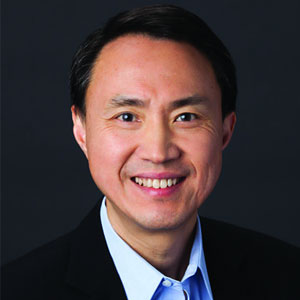THANK YOU FOR SUBSCRIBING
Editor's Pick (1 - 4 of 8)

Steven Parrish, CIO, Taranaki District Health Board
To start the focus on Analytics and AI I believe there are some key learnings from my experience that that can be applied.
1. Minimise manual data collection
In order to get the most out of both analytics and AI first you need data and more specifically electronic data. Healthcare is traditionally very paper based and this can limit the ability to analyse the data to obtain insights or run the AI algorithms. In the collection of data it should be an outcome of the workflow for the user and not a specific focus so that they see value.
2. Static reports vs. data views
We need to move the conversation from provision of static printouts and reports to one of dashboards with drillable data views. This is a conceptual conversation that in my experience key users do not understand as they fall back into what they know and what they are used to. The best way to move the conversation is to do a proof of concept with a key content type and user group to show what is possible. This then provides a demonstrable example of what the difference is between reports and data views.
3. Data extracts vs. Virtual integration
Historically we extract everything from a source system, put it into a large data warehouse and then look at running the analytics across it. There is still a place for that, however, in order to minimise storage and costs there is the ability to integrate virtually with source systems and access the data as needed when a data view is being accessed. One needs to be cautious about performance of the source systems with this so a hybrid approach often is required.
4. Strategy
Organisational buy into any project is key to its success and analytics and AI is no exception. Development of an Analytics and AI strategy needs to align tightly to any organisational strategy to ensure visibility of value to the Executive and Board. This allows for conversations around value and justifies the projects existence. Where organisations see the value you may find that one of the pillars of the organisational strategy is specifically about data and insights, which ties in Analytics and AI.
5. Governance
Once you have a strategy and agreed way forward there is a need for efficient governance. Governance gives the oversight and direction for the organisation and helps you navigate through each challenge as they come up. Membership is key and having senior members of the organisation on the governance board will assist in moving things forward. If membership is delegated you should ensure that the delegate is communicating up and representing broadly the area they represent and not using it as an opportunity to benefit their own agenda.
6. Data and Information Management
The discipline and principles of Information Management are key to getting the best out of the data. Data quality is important, as this is where data confidence is founded. The data does not need to be perfect however, one should understand the level of confidence you have in the data so that this can be considered as the data is used to drive insights and decision-making.
7. Agility
Key to everything that we do should be the ability to be agile. This could be founded in Agile Frameworks and DevOps however in broad terms one needs to be able to change direction, deliver regularly and often and fail quickly while learning as you go. Keep the user involved and adjust as they increase their knowledge of what is possible and therefore change the expectations of what they see as valuable.
With the continued reporting of Healthcare issues, cost overruns and the Minister of Health’s recent announcement of a Health and Disability sector review, healthcare in New Zealand should be looking at the use of Analytics and AI as one of the toolsets to drive efficiencies and cost savings while increasing the focus on patient outcomes and experience.
Check this out: Top Healthcare Analytics Companies
Weekly Brief
I agree We use cookies on this website to enhance your user experience. By clicking any link on this page you are giving your consent for us to set cookies. More info
Read Also
Artificial Intelligence - Myths And Truths
Geraldo Pereira Junior, Chief Information Officer, Ypê
Sustainable Future through Innovative Technology Solutions
Faisal Parvez, Director, BT Business CIO
The Future Relies on Augmented AI
Laurent Fresnel, CIO, The Star Entertainment Group
Digitalization with the use of digital technologies/Improving business through digital technologies
Wilbertus Darmadi, CIO, Toyota Astra Motor
How Marco's Pizza Leaned On Technology To Succeed Amid The Pandemic By Quickly Pivoting To Contact-Free Delivery And Curbside Carryout
Rick Stanbridge, VP & Chief Information Officer, Marco’s Pizza
Bunnings Diy Digital Transformation
Leah Balter, Chief Information Officer, Bunnings
For a Smarter City: Trust the Data, Ignore the Hype
Brad Dunkle, Deputy CIO, City of Charlotte
Smart Community Innovation for the Post Pandemic
Harry Meier, Deputy Cio for Innovation, Department of Innovation and Technology, City of Mesa






















